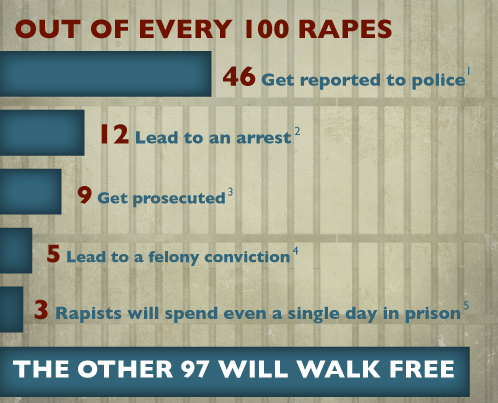
 If you peel away the layers of what happened between George Zimmerman and Trayvon Martin on the night of February 26, 2012, you are left with a series of events set in motion by Zimmerman who 1) judged Martin to be suspicious because of his clothing and 2) stalked Martin because of what he believed was intent to commit a crime.
If you peel away the layers of what happened between George Zimmerman and Trayvon Martin on the night of February 26, 2012, you are left with a series of events set in motion by Zimmerman who 1) judged Martin to be suspicious because of his clothing and 2) stalked Martin because of what he believed was intent to commit a crime.
What does this mean for women, or more specifically, violence against women?
The verdict sets a precedent that suggests women cannot “stand their ground” against a stalker or predator. In the taped police statement, Zimmerman claims Martin came out of nowhere and sucker punched him. For many watching the trial, this is what they believe happened. What they fail to understand is that Zimmerman was not under oath and refused to testify under oath during the trial about his statement. Since no one was present to witness the altercation, it cannot be considered a true account of what happened. Martin’s autopsy revealed only a small abrasion on left ring finger, nothing to indicate the punching and beating Zimmerman claimed or stated by a witness. How did Zimmerman get his injuries?
Martin’s clothing set Zimmerman into motion. Women’s clothing is judged and, if attacked, her outfit will indeed be put on trial as will her actions before saying ‘no.’
Unfortunately, the American justice system allows attorneys to suggest alternative scenarios of a crime to provide reasonable doubt. Their “suggestion” does not have to be based on any facts. It is completely legal to float an idea to a jury that is simply a suggestion. And, all that is necessary is to secure reasonable doubt in one juror’s mind.
I sat on a jury about a year ago. The defendant was found with drugs in her purse. She said she had no idea they were there. During the trial, the father of her children testified. He also said that he did not know where they came from, however her lawyer was allowed to submit a record of his a drug arrest more that 15 years with a charge to the jury by the judge that it could on be used to determine his character as a witness, and not to suggest the drugs from the current crime were his. Even when the defendant testified, she did not say they were his. Our deliberations centered around numerous scenarios of what happened that night, none of which were based on court testimony. We deliberated for two days and each time we said we were stuck, the judge sent us back. There were several people who refused to change their verdict, no matter what. Slowly those who disagreed began to be swayed by the idea of reasonable doubt and knuckle under the enormous pressure to comply. In the end, the jury was faced with hours and hours of bickering (see 12 Angry Men) until we were forced to choose between our sanity and staying true to your conclusion.
This conjuring of stories to produce reasonable doubt is part of the process and has been used in sexual assault trials since time began and why most rapes go unreported. According to the Rape, Abuse and Incest National Network, (RAINN), less than half of all rapes are reported, of that just 3 in 100 will go to prison. Even in the Steubenville rape case, it took a video admitting to the crime to convict the defendants.

What does the Zimmerman verdict mean for women and their stalkers? Will they become powerless to defend themselves?
The verdict suggests to me that a woman is powerless over her stalker unless he initiates contact, a move that could be fatal. It also suggests that reasonable doubt is much easier to instill in jurors’ minds, leaving a rape victim unable to ever see a conviction.


